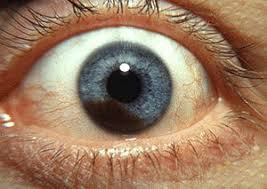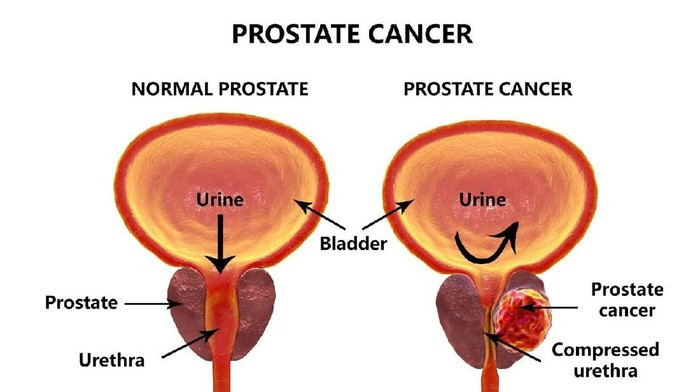Definition
Intraocular tumors are tumors in the eyeball. A tumor is a collection of cells that grow abnormally and form a protruding mass or lump. The ocular tumor can manifest as either benign or malignant, originating from cells within the eye itself (primary tumor) or spreading from tumors originating elsewhere in the body (metastasis). Among adults, the predominant type of tumor derives from metastatic spread originating from primary tumors in organs such as the lung, breast, intestine, or prostate.
Another frequently encountered intraocular tumor is malignant melanoma, characterized by its malignant nature. Although uncommon, ocular melanoma represents the most prevalent primary eye tumors in adults. This tumor arises from pigment cells located in three regions of the eye: the iris, ciliary body, and choroid, collectively known as the uvea.
Other types of primary intraocular tumors that tend to be rare are retinoblastoma and hemangioma. Retinoblastoma is an eye cancer affecting children, caused by genetic mutations. The cancer starts in the retina layer, which is the light-sensitive tissue that lines the back of the eye. When retinal nerve cells begin to grow and reproduce, cancer can spread to the eye or other parts of the body. Other rare eye cancers include conjunctival melanoma, malignant eyelid cancer, and lacrimal gland tumors.
Causes
Benign Eye Tumors
Benign eye tumors involve abnormal cellular growth confined solely to the ocular region without spreading to other body parts. Typically, benign ocular tumors are associated with the skin surrounding the eyes and eyelids. They can also develop on the conjunctiva, the clear membrane covering the sclera. Additionally, benign ocular tumors may arise within the eyeball itself, often not found unless examined by doctors.
Factors contributing to benign ocular tumor formation include:
- Exposure to wind and ultraviolet rays
- Viral infections
- Aging
- Genetic predispositions
- Underlying medical conditions
Common benign intraocular lesions include benign choroidal nevi and congenital thickening of the retinal pigment epithelium. While most are benign, there exists a minimal risk of malignant transformation in choroidal nevi.
Malignant Eye Tumors
Malignant eye tumors, or eye cancers, result from genetic mutations in ocular cell DNA. These mutations disrupt normal cellular functions, promoting uncontrolled cell growth and division. Genetic mutations can cause the cells to function abnormally with increased risks of turning into cancerous cells.
Genetic mutations may be inherited or acquired postnatally. Inherited mutations account for a minority of ocular cancer cases, with most occurring due to environmental factors such as smoking, radiation exposure, viral infections, carcinogenic substances, obesity, hormonal factors, chronic inflammation, and sedentary lifestyles.
Risk Factor
Age and Race
Primary ocular melanoma typically arises in individuals over 50 years of age, with the mean age of diagnosis being 55 years. This type of ocular cancer is uncommon in both children and individuals over 70 years. It predominantly affects white people, with men exhibiting a higher predisposition compared to women.
Medical History
Individuals with light-colored irises or extra pigmentation of the skin around the eyes, manifesting as mole-like spots or multiple flat moles with irregular shape or color, have a heightened risk of developing intraocular melanoma.
Family History
The risks of intraocular tumors or cancer are elevated in individuals with a family history of these conditions.
Other Factors
Exposure to sunlight and certain chemicals, including tobacco smoke, also increases the likelihood of developing ocular tumors or cancer.
Symptoms
Most individuals with ocular tumors are asymptomatic, with these tumors often detected during routine eye examinations. When symptoms do present, they may include:
- Eye redness
- Blurred vision
- Visual impairment
- Moles around the eyes
- Eye protrusion or protrusion around the eye
- Changes in iris color
- Alterations in the size or shape of the pupil
- Floaters, which are small moving spots in the visual field
Diagnosis
Intraocular tumors can be evaluated using various tests. Typically, digital imaging from radiology exams is utilized to monitor tumor growth or changes in tumors over time. Ophthalmologists may perform an ultrasound to determine the tumors' consistency and size. Benign intraocular growths usually manifest as tumors with clear borders, are flat or slightly elevated, whereas malignant tumors have irregular shapes, pigmentation changes, and may contain fluid.
If ocular melanoma is suspected, the following tests are recommended:
- Comprehensive Eye Examination
Enlarged blood vessels on the eye's surface may indicate an intraocular tumor. An ophthalmoscope and slit lamp are used to examine the eye's internal and anterior structures.
- Fluorescein Angiography
A fluorescent dye is injected into the arm, traveling through the blood vessels to the back of the eye, allowing the visualization of examination results on a screen.
- Fine Needle Biopsy
A small sample of tumor cells is extracted using a needle for microscopic examination. However, ocular melanoma can often be diagnosed accurately without a biopsy, rendering this procedure unnecessary in most cases.
- Ultrasound of the Eye
- Optical Coherence Tomography (OCT), this examinatin provides detailed images of the eye's interior.
In cases where ocular cancer is diagnosed, further imaging or radiological tests may be required to determine if the cancer has metastasized to other body parts.
Management
Radiation therapy and chemotherapy are two common treatment options for ocular cancer, both of which can effectively eradicate malignant eye tumors.
Benign Tumors
Surgical removal is a common approach for benign tumors located on the exterior of the eye. Alternative methods include chemical treatments and cauterization. For confirmed benign intraocular lesions, routine examinations every 6-12 months are typically recommended.
Malignant Tumors or Eye Cancer
The primary objectives of eye cancer treatments are to mitigate the risk of metastasis and, when possible, preserve the patient's vision and overall health. Treatment strategies are contingent on several factors, including the cancer type and stage, potential side effects of treatments, and the patient's general health condition.
Treatment options for eye cancer may include:
- Surgery. The affected ocular region is removed depending on the cancer's size and spread of cancer cells.
- Enucleation. In severe cases, the removal of the entire eyeball may be necessary.
- Radiation therapy. This involves multiple sessions aimed at destroying cancer cells over a specified period.
- Laser therapy. This is one of treatments to reduce tumor size, this method generally has fewer side effects compared to surgery or radiation.
Early detection of ocular cancer often broadens treatment possibilities. Although not all eye cancers can be detected early, some types of eye cancer have quite typical symptoms. Regular eye examinations are crucial, as early-stage eye diseases frequently present without symptoms.
Complications
Ocular tumors can lead to complications such as exophthalmos or eye protrusion, where the eyelid cannot close properly. This can cause dryness and irritation.
Complications from ocular cancer such as melanoma include:
- Optic nerve damage and increase of intraocular pressure (glaucoma). This manifests as eye pain, redness, and blurred vision.
- Change in eyeball shape.
- Vision loss, mainly in large melanomas. Melanoma can also cause blindness, and even smaller tumors can impair vision if located in critical areas.
- Retinal detachment or ablation, this can lead to significant vision loss.
- Metastasis or the spread of cancer to distant organs, including the liver, lungs, and bones.
Treatment-related complications, particularly from radiation therapy, may include corneal inflammation, fragile new blood vessel formation, glaucoma, and damage to the optic nerve and retina.
Prevention
Preventive measures for ocular tumors, especially ocular cancer, include:
- Limiting prolonged sun exposure.
- Wearing protective clothing and hats from sunrays.
- Using sunscreen and sunglasses that offer 99-100% UVA and UVB protection for the eyes and surrounding skin.
When to See a Doctor?
Immediate consultation with an ophthalmologist is advised if symptoms indicative of intraocular tumors are observed. Prompt diagnosis and treatment are critical in preventing disease progression and complications.
Individuals with risk factors for ocular cancer should undergo regular comprehensive eye examinations.
Looking for more information about other diseases? Click here!
- dr Hanifa Rahma
Bedinghaus T. (2020). An overview of eye tumors. Retrieved 3 April 2022, from https://www.verywellhealth.com/eye-tumors-overview-4427967
Eye tumors. (2021). Retrieved 3 April 2022, from https://www.hopkinsmedicine.org/wilmer/conditions/tumors.html
Martin K. (2021). What is there to know about eye cancer?. Retrieved 8 April 2022, from https://www.medicalnewstoday.com/articles/eye-cancer
Eye cancer. (2019). Retrieved 8 April 2022, from www.nhs.uk/conditions/eye-cancer/
Eye melanoma. (2020). Retrieved 8 April 2022, from https://www.mayoclinic.org/diseases-conditions/eye-melanoma/symptoms-causes/syc-20372371
Boyd K. (2020). Eye cancer. Retrieved 8 April 2022, from https://www.aao.org/eye-health/diseases/eye-cancer












